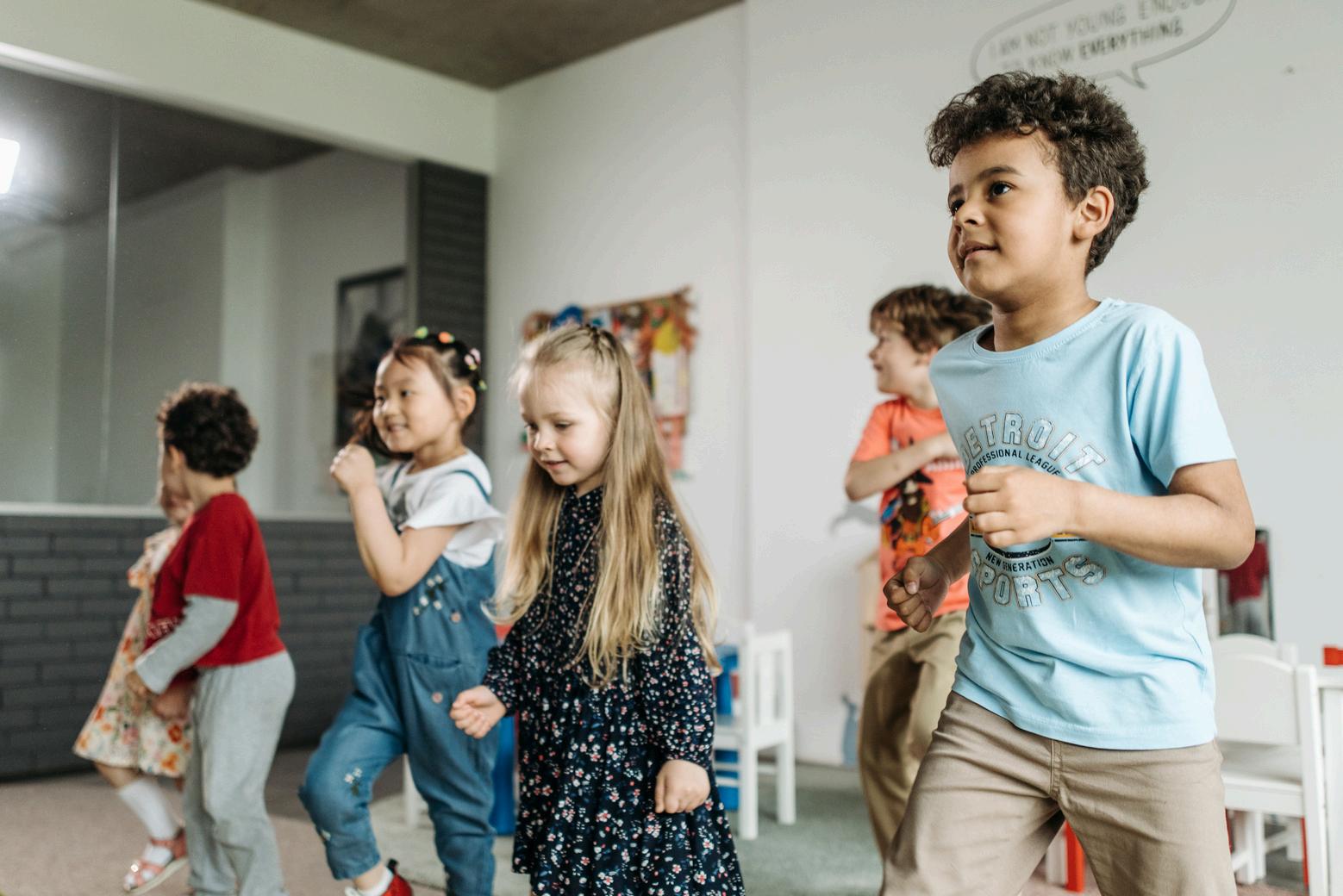
4 minute read
Excellence in Early Education
Dr Liz Stafford shares her top tips for teaching tinies!
Music is a powerful tool for supporting early development in children, particularly in the crucial early years between the ages of three and five. During this period, children are naturally curious, imaginative, and eager to explore the world around them. Here are some practical and effective strategies for introducing and teaching music to young children in this age group.
Create a music-rich environment
The first step to embedding music in the early years is creating an environment where music is naturally part of daily life. This does not require a specialist music room, just a thoughtful selection of resources and opportunities for exploration. Include a range of instruments (both tuned and untuned), scarves or ribbons for movement, and recorded music from diverse genres and cultures. Having instruments easily accessible allows children to explore sound independently, as well as during more formal taught activities.
Follow the children’s lead
At this age, child-led learning is essential. Music activities should be playful and responsive rather than overly structured. Pay attention to the sounds children are naturally drawn to - banging on a drum, humming a familiar tune, or making up their own songs. Use these moments as opportunities to engage and extend their musical thinking. If a child starts tapping a rhythm, join in and repeat it back. If a group begins singing a nursery rhyme, explore how it might sound if sung slowly, loudly, or accompanied by movement.
Incorporate singing daily
Singing is one of the most accessible and effective ways to introduce musical concepts. Songs help children develop listening and memory skills, improve their vocabulary, and build confidence. In the EYFS setting, singing can be woven into all parts of the day - greeting songs in the morning, tidy-up songs, transition songs between activities, and lullabies for calm time.
Choose songs with repetitive patterns, clear melodies, and actions that support understanding. Traditional nursery rhymes are a great place to start, but do not be afraid to introduce new songs, particularly those that reflect different cultures and languages.
Promote movement and expression
Music is inherently physical for young children. They experience rhythm and pulse through movement long before they can express it in words. Incorporate dancing, marching, clapping, and body percussion to help children internalise musical elements like tempo and dynamics. Use scarves, hoops, or streamers to help children interpret music through expressive movement, and allow for freedom in how they choose to move to the beat. This type of active participation supports not only musical development but also gross motor skills and coordination — key areas of the EYFS curriculum.
Use stories and imagination
Linking music to stories and imaginative play is a powerful way to deepen engagement. Many songs naturally tell stories, and you can build on this by creating musical soundscapes or using instruments to add sound effects to familiar tales. Encourage children to invent their own songs as part of role play or storytelling activities, helping them to see music as a form of creative expression.
Introduce musical concepts
While it’s important not to overwhelm children with formal terminology, foundational musical concepts can be introduced playfully. For example: Use high and low voices or instruments (pitch); clap along to syllables in names or stories (rhythm); play ‘fast and slow’ games with marching or dancing (tempo).
Inclusion and Accessiblity
Not every child will immediately gravitate towards music, so offer different entry points. Some may prefer listening to recorded music, while others enjoy creating their own sounds or moving to music. Be mindful of children with additional needs; some may be sensitive to noise or overstimulated by large group singing. Offer quiet musical spaces or one-to-one sessions when appropriate, and ensure a range of instruments and approaches to support and encourage all children.
Wider community collaboration
Children benefit when their musical learning is reinforced at home and in the wider community. Share songs with families so children can sing them at home, and invite parents or local musicians into the setting to share music from their cultures or backgrounds. Celebrating musical events or festivals also offers rich opportunities to connect learning with real-world experiences.
Teaching music to early years children is not about producing mini maestros. It’s about nurturing a lifelong love for music and supporting children’s holistic development through joyful, engaging experiences. By embracing play, movement, and creativity, educators can make music an integral and inclusive part of the early years journey, laying the foundation for confident, expressive, and curious musical learners.







